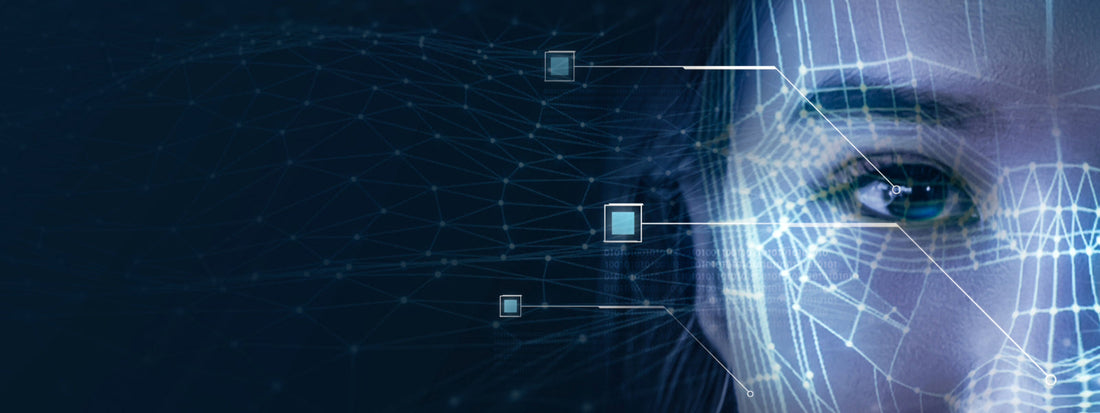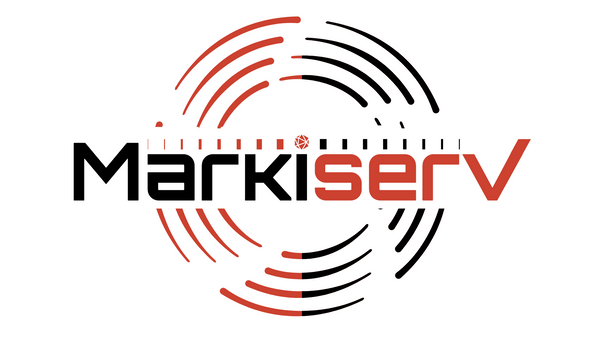
How AI Can Help Fill the Gaps Left by the Baby Boomer Generation
Share
Introduction: The Baby Boomer Transition and Its Challenges
The Baby Boomer generation (born between 1946 and 1964) has long been a dominant force in shaping global economies, labor markets, and social institutions. This generation was responsible for massive industrial growth, economic booms, and innovations across multiple sectors, from technology to healthcare and beyond. However, the inevitable passage of time means that the Baby Boomer era is coming to an end, bringing significant societal and economic challenges that businesses, governments, and individuals must urgently address.
One of the most pressing issues caused by this generational shift is the large-scale retirement of Baby Boomers from the workforce. In the United States alone, approximately 10,000 Boomers turn 65 every single day, and by 2030, all members of this generation will have reached retirement age. This mass exodus is creating a severe labor shortage in industries such as manufacturing, construction, healthcare, and public service, as younger generations struggle to fill the vacancies left behind. Additionally, many Baby Boomers hold senior leadership positions in businesses and government, and their departure is resulting in a significant loss of institutional knowledge, experience, and strategic expertise.
But the workforce gap is only part of the issue. As Baby Boomers age, they are placing increased strain on healthcare systems, particularly in elderly care and medical services. More people require assisted living, chronic disease management, and end-of-life care, leading to financial and logistical challenges for healthcare providers. Socially, the departure of Baby Boomers from leadership roles in local communities, nonprofits, and cultural institutions means that a wealth of experience in mentorship, community-building, and public administration is at risk of being lost.
Given the scope of these challenges, businesses, industries, and governments must look for innovative solutions to fill the gaps left by this generational transition. One of the most powerful tools at our disposal is artificial intelligence (AI).
How AI Can Fill the Gaps Left by the Baby Boomers
AI has already transformed numerous industries, but its role in bridging generational gaps is becoming increasingly critical. AI-powered solutions can help with workforce augmentation, decision-making, automation, and knowledge preservation, ensuring that the economic and social foundations built by Baby Boomers are maintained and strengthened in the coming decades.
For instance, AI can assist in workforce shortages by automating repetitive tasks in industries such as manufacturing, logistics, and healthcare, allowing businesses to operate efficiently even with fewer human workers. It can also be used to train and upskill younger generations, helping them adapt more quickly to roles previously held by Baby Boomers. In the business world, AI-driven predictive analytics and decision-making tools enable companies to retain and utilize decades of business intelligence, ensuring that leadership transitions do not disrupt long-term stability.
Beyond the workplace, AI is playing a transformative role in elder care, remote healthcare monitoring, and disease prediction, allowing aging populations to receive better and more efficient care without overburdening healthcare systems. In public administration and community leadership, AI can assist in organizing, managing, and maintaining important historical and policy data, ensuring that the wisdom and experience of past generations remain accessible for future leaders.
The impact of Baby Boomers on society is immeasurable, but their departure doesn’t have to result in instability or economic decline. With AI-powered solutions in place, businesses, governments, and individuals can adapt and thrive in a post-Baby Boomer era. In this article, we’ll explore in detail how AI is addressing employment shortages, leadership gaps, healthcare challenges, and social shifts, ensuring that we are prepared for the challenges—and opportunities—that lie ahead.
1. AI in the Workforce: Filling Employment Gaps and Knowledge Transfer
The Problem: A Growing Labor Shortage and Skills Gap
With millions of Baby Boomers retiring, industries such as manufacturing, healthcare, construction, and government services are struggling to find replacements. Many of these jobs require specialized skills that younger generations either lack or are not pursuing due to shifts toward knowledge-based professions. Additionally, the institutional knowledge Boomers have accumulated over decades is at risk of being lost if not properly transferred.
The AI Solution: Workforce Augmentation and Automation
AI is stepping in to automate repetitive tasks, enhance decision-making, and accelerate skills development to make up for the workforce shortfall. Some ways AI is helping include:
AI-Powered Training & Knowledge Retention – AI-driven platforms like chatbots, virtual training assistants, and predictive analytics can store and distribute the expertise of retiring Boomers, ensuring that institutional knowledge is not lost.
Automation of Manual Labor – In industries such as manufacturing, logistics, and construction, AI-powered robotics and automation are filling labor gaps by performing repetitive, time-consuming tasks.
Intelligent Hiring and Workforce Matching – AI-driven recruitment platforms are helping businesses find and train younger workers by matching them with the right opportunities based on skills, experience, and industry needs.
AI is not replacing human workers but enhancing their capabilities, making businesses more productive and sustainable as they transition to a post-Baby Boomer economy.
2. AI in Business: Mitigating Leadership Gaps and Enhancing Productivity
The Problem: The Loss of Experienced Business Leaders
Many Baby Boomers hold executive and senior management positions in businesses. Their departure is leading to leadership gaps, causing instability in corporate decision-making and long-term strategic planning. Additionally, small businesses owned by Baby Boomers are at risk of shutting down due to a lack of succession planning.
The AI Solution: Decision Support and Business Automation
AI is helping businesses manage leadership transitions by:
- AI-Driven Decision-Making Tools – Machine learning algorithms can analyze historical business data and provide insights that help younger executives make informed decisions quickly.
- Business Process Automation – AI tools like CRM automation, predictive analytics, and workflow optimization enable companies to function efficiently even as leadership structures change.
- Succession Planning and Knowledge Transfer – AI is being used to identify and develop future leaders by analyzing performance data and recommending mentorship programs to pass on valuable insights.
With AI's ability to process vast amounts of data and predict trends, businesses can remain resilient and adaptable, even as their leadership undergoes generational shifts.
3. AI in Healthcare: Supporting an Aging Population
The Problem: A Growing Healthcare Crisis
As Baby Boomers age, they are increasing the demand for healthcare services, assisted living, and home care. The burden on hospitals, nursing homes, and caregivers is reaching unsustainable levels. Additionally, the healthcare industry itself is facing a workforce crisis, with not enough doctors, nurses, and medical professionals to meet demand.
The AI Solution: Healthcare Automation and Remote Monitoring
AI is playing a crucial role in enhancing elderly care, diagnosing diseases faster, and reducing healthcare costs:
AI-Powered Diagnosis and Personalized Treatment – Machine learning models can analyze medical data and provide faster, more accurate diagnoses, reducing the workload on doctors.
Remote Monitoring and Virtual Health Assistants – AI-driven wearable devices and smart home technology can monitor vital signs, detect emergencies, and alert caregivers, enabling elderly individuals to live independently for longer.
Automated Healthcare Administration – AI chatbots and robotic process automation (RPA) streamline scheduling, medical billing, and patient management, freeing up healthcare professionals to focus on patient care.
By integrating AI into healthcare systems, we can improve elder care, reduce strain on medical professionals, and create a more efficient, accessible healthcare system.
4. AI in Society: Preserving Knowledge and Enhancing Social Infrastructure
The Problem: Loss of Cultural Knowledge and Community Leadership
Baby Boomers have played a critical role in community organizations, local governments, and cultural institutions. Their departure is creating leadership voids and risks losing important cultural and societal knowledge.
The AI Solution: Digital Archiving and Smart Cities
AI is being used to preserve knowledge and improve social infrastructure:
- AI-Powered Digital Archiving – Organizations are using AI to digitize books, historical records, and oral histories, ensuring that cultural knowledge is preserved for future generations.
- Smart Cities and AI-Driven Public Services – AI is optimizing transportation, energy distribution, and urban planning, making cities more efficient as populations age and shift.
- AI in Government and Public Administration – AI tools are improving policy decision-making, streamlining public services, and ensuring that governance remains effective even as leadership structures change.
With AI-driven solutions, we can preserve the wisdom of past generations while making society more adaptable to the future.
Final Thoughts: The Future of AI in a Post-Baby Boomer World
The aging and passing of the Baby Boomer generation present unprecedented challenges, from workforce shortages to healthcare burdens and leadership gaps. However, with the rise of AI-driven automation, intelligent decision-making, and workforce augmentation, businesses, governments, and individuals have powerful tools to navigate these shifts successfully.
AI is not about replacing people—it’s about empowering the next generation to carry forward the achievements of their predecessors while building a more efficient, sustainable, and innovative future. By integrating AI into workplaces, healthcare, and social systems, we can ensure that the transition from the Baby Boomer era to the next is as smooth, productive, and meaningful as possible.
Helpful Resources to Learn More:
- AI in Healthcare – How AI is transforming medical care.
- Smart Cities and AI – The role of AI in improving urban living.
- AI and Business Decision-Making – How AI enhances corporate strategy.
- Marketing and Contracting - free up your business GAPs with Markiserv.
By embracing AI-driven solutions, businesses, governments, and society as a whole can adapt, innovate, and thrive in a world reshaped by the Baby Boomer transition.
